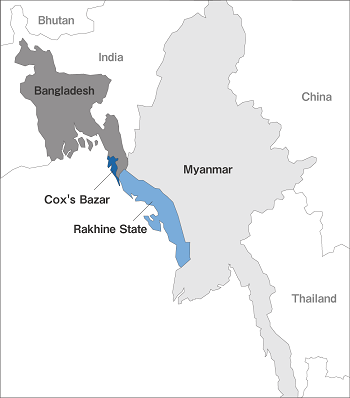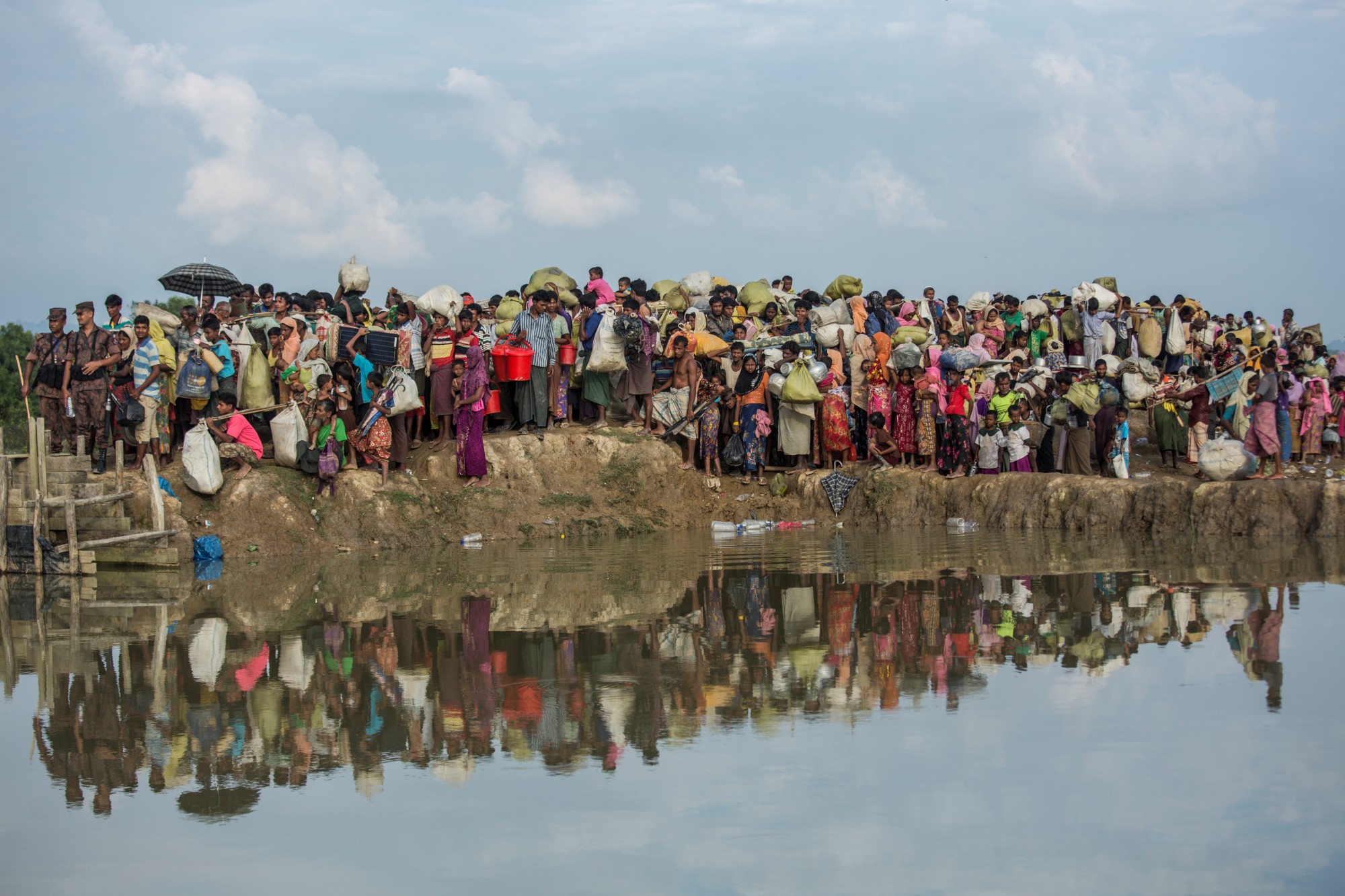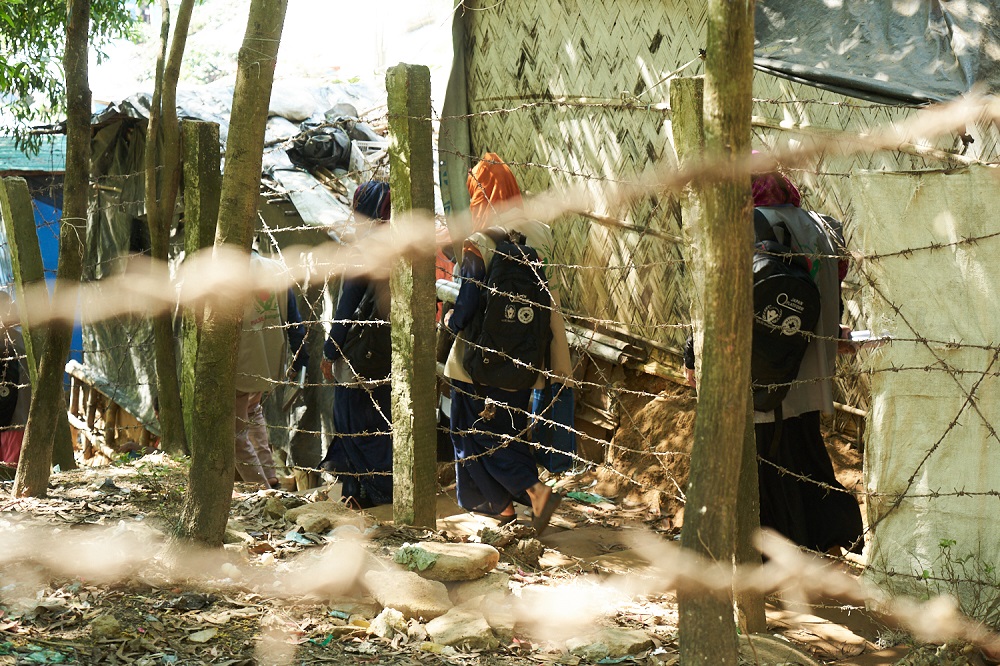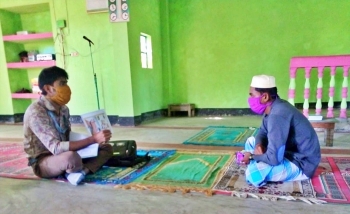The Rohingya
– Persecution and discrimination against Rohingya in Myanmar 1
 Rohingya is mainly a Muslim minority in Myanmar. The population is said to be 1 to 2 million, most of whom live in Rakhine State in western Myanmar. In Myanmar, where more than 100 ethnic minorities live, there have been constant conflicts between these ethnic groups and the government, especially in the border areas2.
Rohingya is mainly a Muslim minority in Myanmar. The population is said to be 1 to 2 million, most of whom live in Rakhine State in western Myanmar. In Myanmar, where more than 100 ethnic minorities live, there have been constant conflicts between these ethnic groups and the government, especially in the border areas2.Persecution and violence have surrounded the Rohingya people for decades.
In 1962, the military that seized power by a coup d’état increased discrimination and oppression against the Rohingya. Since 1978, they have fled to Bangladesh and other places. The revised Nationality Law (Citizenship Law), which came into force in 1982, deprived the Rohingya of nationality and citizenship as illegal immigrants.
Since then, discrimination, oppression, and social attacks on the Rohingya had gradually intensified.
They have been housed in camps, deprived of their freedom of movement, as well as of their basic human rights such as education and medical care. Meanwhile, tensions and armed conflicts between the anti-government armed groups and the Myanmar government intensified, and culminated in the massacre of the Rohingya by the Myanmar Armed Forces, which began on August 25, 2017. It is estimated that over 10 000 people were killed in an atrocious manner, including arson, shootings and rapes. Since that day, more than 700,000 people have crossed the border into Bangladesh.
Today, the camp in Cox’s Bazar in southwestern Bangladesh is home to more than 860,000 people, including formerly-settled refugees.

Our Activities
Shortly after the massive influx of Rohingya into Bangladesh, as of now the world’s largest refugee crisis, in September 2017, Médecins du Monde began medical treatment in camps.
Since 2018, when the emergency response took hold, our support has shifted to outreach to people who need medical care but cannot make it to clinics to help them access healthcare.
As time of their refuge goes by, we have been working on awareness raising activities for disease prevention and health maintenance / promotion in the community, and nurturing community support mechanism. MdM works with Rohingya volunteers so that they themselves educate and empower their peers.

Our work in host community

The large influx of refugees revealed needs in essential services for the host community. Against this background, MdM also carries out community health activities such as health education and awareness campaigns in the host community. We are also helping community clinics in their capacity building with local partners and staff.
Together with the Rohingya
Rohingya people cannot see clear prospects in their future. Although the Bangladeshi government, local NGOs, and the international community are cooperating, Rohingya people are spending days in limbo, still longing for returning to Myanmar, which has been greatly affected by geopolitics, and without fulfillment of basic human rights or entitlement to nationality. Médecins du Monde has been supporting people so that they maintain and improve their mental and physical health with awareness of their right to health.

1 – Hiroaki Nakatsubo (August 2019). Impact of 1 million Rohingya refugees
2 – Tom Kramer (2012). Real image of Myanmar politics: Merits and demerits of 23 years of military administration and the future of the new administration Chapter 4 Minority Conflict in Myanmar (Japan External Trade Organization (JETRO) Institute of Developing Economies)
-1200px-Armed_conflict_zones_in_Myanmar.png (1200×2663) (wikimedia.org)
Rohingya Refugee situation / Our past work
2017 |
August 25 |
December 2017-April 2018: |
|
2018 |
|
August 2018-May 2019: |
|
2019 |
|
May 2019-March 2020: |
|
August |
|
September |
|
2020 |
May |
May-December 2020: |
|
July-December 2020: |
|
August |
|
December |
|
2021 |
February |
2024 |
March.2024~:Comprehensive non-communicable disease prevention and control activities, including mental health |
August |
|
2025 |
July |
To date, about 1 million people have fled to Bangladesh